i3 Solutions Group Design Services
Data Centre Design
As specialists in data centre MEP engineering services, i3 is recognized for its expertise in power and cooling system design. Our experience and focus, together with our passion for engineering, means we pursue the optimal design solution to meet client requirements across the spectrum of greenfield, brownfield, modernization and capacity upgrade data centre projects. We work across wholesale, colocation, cloud services, telecom, financial and public sectors, providing exceptional design services for clients developing mission critical facilities from 1MW to 100MW IT load. Clients trust i3 to future-proof their data centres and provide sustainable, reliable and flexible facilities, which maximise the IT load and load density and consistently deliver high yield from their investments in digital infrastructure. Innovations such Adaptable Redundant Power (ARP) and High Rise Green Data Centre demonstrate our thought-leadership and commitment to moving the industry forward.
Design Services
The speed with which the industry has developed since its inception over 50 years ago means that design has been in a constant state of evolution. Today, i3 Solutions Group designs facilities to meet client’s sustainability goals, provide long-term flexibility to accommodate evolving IT and end-user requirements, and deliver a low first cost. Acting as Lead Consultant in a multidisciplinary capacity, i3 supports clients throughout the design process from initial concepts to detailed co-ordinated data centre design projects. We routinely use REVIT/ 3D modelling, reliability modelling and computational fluid dynamics to scientifically establish performance and the effects of change upon the infrastructure design and IT load. i3 Solutions Group has earned a global reputation for future thinking and innovation in data centre design. We are leaders in MEP cyber-security countermeasures to defend data centre physical infrastructure from a plethora of attack surfaces. Through circuit coordination, load flow and arc flash analysis, we provide confidence of safety, failover and power flows throughout the electrical system. The reality of all electro-mechanical systems is that failure at some point is inevitable; the larger and more complex the system, the greater the likelihood of failure. By understanding the characteristics of complex data centre system through reliability rodelling, i3 designs for fault tolerant concurrently maintainable operations.
Optioneering
Whether investing in a greenfield or brownfield site, or modernizing an existing facility by upgrading capacity or replacing ageing or inefficient plant, clients want to know the maximum they can achieve from their data centre developments. i3 works collaboratively and iteratively with clients to find the optimal balance between cost and function. Guided by engineering logic and out-of-the-box thinking, i3 provides considered designs which deliver more capacity and higher reliability, and therefore more income potential to our clients, whilst meeting the requirement for rapid speed to market. We take practical, flexible and client-focussed approach which accommodates requirements that evolve during the design process. Our objective is always to maximise yield and optimize the budget to meet most exacting design brief.
Reliability
Data centres are designed for continuous operations, but equipment failures in such complex environments is almost inevitable. Reliability Modelling is a powerful tool for evaluating the suitability of a fault tolerant design to meet availability and reliability SLAs. Reliability Modelling can provide insight into predicted data centre failure, by aggregating data about components and equipment used in the design as well as other external factors such as local environmental conditions and the reliability and quality of the utility power supply, both of which can also stress the data centre infrastructure. With the results of reliability modelling, steps can be taken to mitigate the effect on data centre cost and performance , for example, by organizing the topology configuration, service routines and critical spares to increase overall MTBF and reduce system MTTR.


